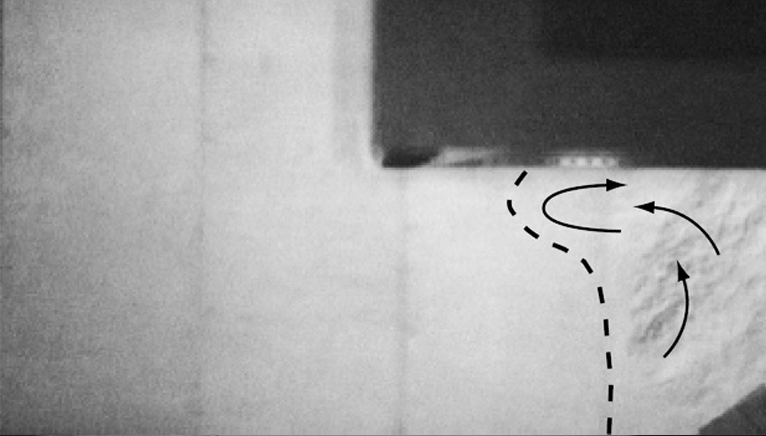Wouldn’t it be nice to see the heat plume coming off of an appliance? Do you wish you could see if a hood is capturing all the convective heat? Isn’t there a better way to determine capture and containment than a smoke candle?
Schlieren Thermal Imaging System provides a way to do all of these things. In a kitchen environment, Schlieren Imaging or more simply Schlieren, is a method of seeing changes in air temperature.
Documented Schlieren Imaging dates back to the mid 1600s and work done by a British scientist named Robert Hooke. The original Schlieren system that Hooke built consisted of: a candle as a light source, another candle as a heat source, a lens and his eyes. The name for the physical phenomenon didn’t come about for another 200 years when German physicist August Toepler re-invented the technique and named it after optical sameness in glass which were known in German as Schlieren. Even though the word Schlieren is German for streaks, it has become a universal word.
Since then techniques and technology has changed, allowing for a much sharper image. Since its conception this imaging method has been used for such applications as visualizing: shockwaves (from bullets, rockets, explosions and supersonic jet), leaks in gas lines, imperfections in glass, and heat plumes from various sources.
In the kitchen the purpose of the Schlieren Imaging is to see heat plumes from appliances. For a kitchen environment a lens-and-grid system is used.

Figure 1.
Schlieren Imaging of a hood capturing the entire heat plume.

Figure 2.
Schlieren Imaging of a hood spilling the heat plume.
A typical system consists of; a bright white LED source, condenser lenses, a source grid, a folding mirror, projection lens, beam splitter, imaging lens, cut-off grid, light trap and a digital SLR camera. Advances in Schlieren Imaging allows for images and video to be captured without the need for a photographic negative of the source grid. This enables shorter setup times and more viewing angles in the laboratory setting.
Schlieren photography lends itself very well to capture and containment (C&C) testing. C&C testing is the process of determining the lowest airflow possible for an exhaust hood to capture and contain all the heat and effluent from the cooking process.
Traditionally smoke from the cooking process or smoke bombs are used and observed to see if a hood is spilling. The cooking method is flawed in that it is possible for a hood to capture all of the visible smoke and still be spilling heat to the kitchen. This results in added heat load to the space that is not considered by the HVAC design engineer. The smoke bomb method has flaws that could allow too high or too low of a flow rate to be selected. If the smoke volume is too large it could show spillage even though the hood is containing all of the heat. This would lead to a higher than necessary exhaust flow rate and consequently a higher supply flow rate increasing system tonnage and energy usage. On the other hand if the smoke volume is too small, it could give a false picture of capture and containment, while in reality heat is escaping from the hood.
The advantage of Schlieren Imagining
Using Schlieren provides many advantages over these methods of detecting C&C such as; the ability to see heat not just smoke. Seeing the heat plume takes the guesswork out of C&C testing as there is no longer a question of whether the smoke volume is correct.


Comments
One response to “What is Schlieren Thermal Imaging in Commercial Kitchen Ventilation?”
Dear Sir,
can you E-mail me about arrangement/ setting of components of Schlieren imaging of commercial kitchen. regard